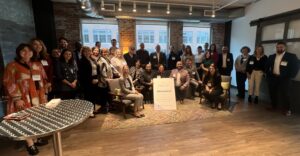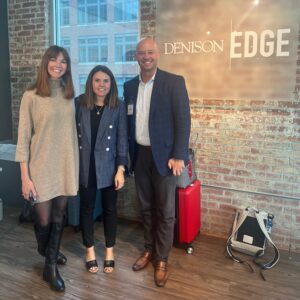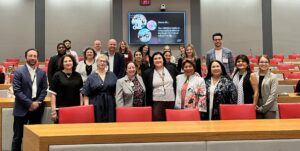At a time when anti-immigrant rhetoric is splashed across the news, it can be easy to get lost in the whirlwind of misplaced fear politicians continue to foster. But this year’s eighth annual Global Talent Chamber Network (GTCN) Convening: Business Leadership on Immigration During an Election Year served as a critical reminder that business leaders across the country continue to push for immigrant inclusion and find common ground on the issues businesses care about: modernizing an outdated immigration system to better meet the needs of the local, state, and national economies.
In early October, more than 20 representatives from 17 different chambers of commerce from across the United States – from red and blue communities alike – gathered in Columbus, Ohio, for the annual chamber convening hosted in partnership with the Columbus Chamber of Commerce. Each group demonstrated their commitment to open, fact-based conversations focused on finding solutions that work for local economies. The convening created a space for community leaders, experts, and chambers to discuss how the business community can collaborate more closely with immigrants to ensure a more equitable future where everyone can thrive and ensure newcomers can contribute their skills to their local community and economy.

Kicking off the event, the American Immigration Council’s executive director, Jeremy Robbins, and Ben Johnson, executive director of the American Immigration Lawyers Association (AILA), provided attendees with an overview of the federal landscape and shared opportunities where the business community voice is most vital. For instance, chambers can weigh in on federal legislation that impacts the workforce needs of their member businesses — from uplifting the key contributions of immigrants in their communities to addressing case backlogs and understanding the economic implications of a new presidential administration in 2025.
Next, a panel of direct-service organizations shared best practices in utilizing data, connecting immigrants to businesses to address workforce shortages across the skills spectrum, and uplifting practical strategies to advance welcoming policies that benefit the entire community. The panel, which included Jewish Family Services, Riverview International Center, the Hispanic Chamber of Columbus, and the Columbus Chamber Foundation in Ohio, stressed the importance of listening and shared examples of how simple, culturally competent shifts in employee policies can improve workplaces. They shared how these strategies have allowed them to successfully engage community leaders and stakeholders who might not typically weigh in on immigration to find solutions that are beneficial to employers and immigrant workers. During the panel, our convening co-host, the Columbus Chamber of Commerce, shared their new tool, An Employee Guide to Hiring Global Talent in Central Ohio.
Organizers from the Council’s three business coalitions – Colorado Business Coalition for Immigration Solutions, Ohio Business for Immigration Solutions, and Texans for Economic Growth – then discussed their work to build and sustain their coalitions while also breaking down silos in their politically diverse states. Throughout the day, chamber members shared their experiences, discussed their challenges, and shared best practices to navigate the increasingly difficult political environment around immigration, all while still advancing meaningful change, such as creating return-to-work programs or utilizing Workforce Innovation and Opportunity Act federal funding to support adults in cultivating and obtaining the necessary education and skills for workforce development.

The convening concluded with a site visit to The Ohio State University James Cancer Center, organized by Vibrant Ohio, where panelists working in various roles at the center shared ways to increase opportunities for immigrants, including offering job-tailored English classes, promoting higher education and research pathways, educating healthcare providers on providing culturally competent medical care, and creating spaces where local immigrant communities can share their concerns and have their needs addressed. A second panel featured community leaders sharing how businesses can invest in pathways for immigrant workers.

It’s clear that as chamber leaders returned home to their respective communities, they will have to continue to navigate highly charged political rhetoric on the issue of immigration, the ever-changing dialogue around immigrant workforce inclusion, and what’s to come in 2025.
However, the one thing that has stayed constant is their commitment to building a business community that recognizes the importance of strengthening local economies, addressing workforce needs, and utilizing the skills that immigrants bring.
FILED UNDER: Chamber of Commerce, Ohio


